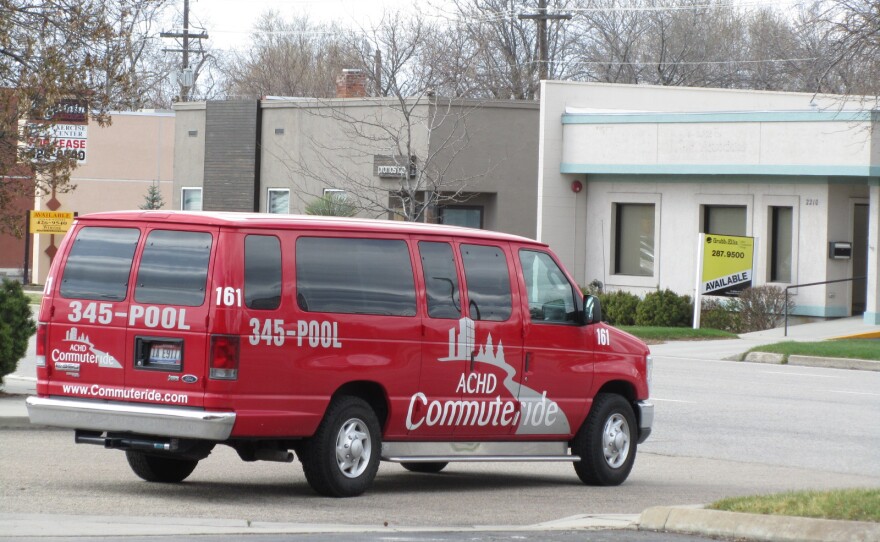Gas prices in Idaho continue to climb, so people are looking at other ways to commute. They walk, bike, bus, or take a public van. Ada County Highway District runs one of the oldest vanpool programs in the nation. Commuteride started in the 1970s.
It’s 1973. The price of gas has skyrocketed. And drivers wait in long lines to fill their cars up at the fuel pump. On one October NBC Nightly News report, this is what you would have heard on how the oil crisis started, "Good evening. The Middle East War produced developments all over the world today. The oil-producing countries of the Arab world decided to use their oil as a political weapon."
The Ada County Highway District launches Commuteride a few years later to help people vanpool. Now, nearly forty years later, the Middle East is still a hot spot, gas prices are up again, and interest in Commuteride is also on the rise. "We do tend to see a spike in the number of calls we get into the office when gas prices go up," say Commuteride supervisor Kirk Montgomery. "It’s a natural reaction when somebody has to go to the pump and they feel that come out of their wallet."
About 1,000 people who work in the Treasure Valley decided to do something about that feeling. They joined together to vanpool. Commuteride’s vans travel as far west as Ontario, Oregon and as far east as Mountain Home on nearly 100 routes. "Every van is a microcosm. They all have their different personalities which is very fascinating to us," says Montgomery.
On weekdays, Janell Hyer leaves her Nampa home early in the morning and picks up a van-load of riders to drop off in downtown Boise. She’s been doing this for more than 20 years as a driver for Commuteride. Hyer gets paid nothing for this, but she gets a free ride to work at the Idaho Department of Labor and back. And she gets to drive a bright red van. Hyer says, "We call it Big Red. One time we had a medium turquoise and it just wasn’t the same. "
Hyer is one of 300 volunteer drivers for Commuteride. Big Red typically has nine passengers. Rich Lareau is one of Hyer’s regulars. He’s commuted with her for about five years. Lareau says, "Sometimes people, as you’re driving home or driving to, they’ll look at you like you’re an animal in the zoo or something, you know."
For Lareau, the benefits of the vanpool program are worth the stares. The Nampa to Boise roundtrip fare is $100 a month. His employer subsidizes three-quarters of the cost. Lareau says, "I’ll tell you, you know, from an economic point of view particularly for people that work in the Western part of Treasure Valley that work in Boise. I can’t think of a better way to conserve some money."
Lareau says the vanpool has other benefits. His auto insurance is less. He doesn’t have to take his car into the shop as much. He doesn’t have to pay to park downtown. Hyer agrees, "I drove my one car until it literally died and then I bought a little Volkswagon Bug. And it’s twelve years old and it has just barely 50,000 miles on it because it only goes fun places."
Hyer thinks another reason vanpools are on the rise is the stress-free commute. She says many of her passengers read, sleep, or tap on their smartphones as she drives. "It’s kind of a change in your lifestyle that you have to get to, but once you’ve done it most people don’t want to go back to driving again."
Public vanpools also run in Moscow, Pocatello and the Sun Valley area. Last year, there was an 11 percent uptick in the number of such trips statewide. Nationally, that number went up from 12 million miles in 2002 to 31 million in 2010. And as gas prices climb this spring, it’s likely the popularity of vanpooling in Idaho will continue to grow. That means you may see more drivers like Janell Hyer navigating Big Red vans around the Treasure Valley.
Copyright 2012 Boise State Public Radio.






